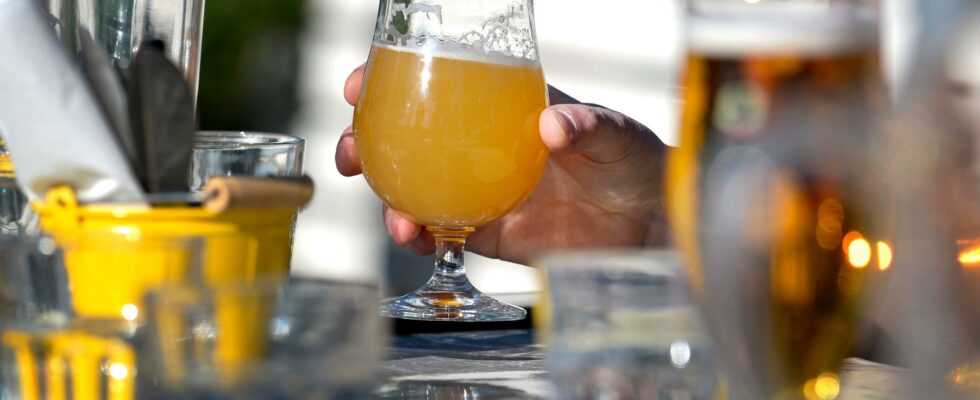unsaveSave
expand-left
full screen The survey has been carried out on behalf of Systembolaget. Archive image. Photo: Janerik Henriksson/TT
Managers drink more than most other occupational groups. Carpenters and bricklayers follow closely behind, according to a recent survey.
– This is something we recognize from previous surveys. It is obvious that managers, especially CEOs, have a high alcohol consumption, says Mats Ramstedt, research manager at the Central Association for Alcohol and Narcotics Information (CAN) and one of the authors of the report.
The results come from a survey carried out by CAN on behalf of Systembolaget. The survey is based on data on around 8,000 working Swedes who answered questions about their alcohol habits.
26 standard glasses
On average, the CEOs who responded to the survey state that they drink 26 standard glasses per month. Almost six out of ten state that they drink a lot of alcohol at a time, so-called intensive consumption, at least once a month. The pattern is the same among both men and women.
Although the basis is limited, a total of 743 people in management occupations were included in the survey, the result gives a clear signal, according to Mats Ramstedt.
– The combination of high average consumption and regularly drinking a lot at a time makes managers as a group stand out, says Mats Ramstedt.
Second highest is the occupational group “Carpenters, masons and construction workers”. They state an average consumption of 24 glasses per month. Half are intensively consumed once a month. This can be compared with doctors, where only one in ten intensively consumes alcohol once a month.
It is precisely within health care and within schools that the occupational groups that, according to the survey, drink the least. Nurses end up lowest in average consumption.
Why managers drink a lot, scientists can’t say, but there are theories.
– It can be about a high availability of alcohol and about stress and high demands. But it can also be about resources – alcohol costs money, says Mats Ramstedt.
Working life is important
One thing that surprised the researchers was that even though CEOs seem to drink the most, they don’t have the highest percentage of alcohol problems. According to the survey responses, restaurant staff are at the top, followed by accountants, financial analysts and fund managers.
Nor can the researchers explain this difference based on the survey.
– But we know that working life is an important arena in which to prevent alcohol problems, and the survey gives a signal about which groups you may need to invest extra in, says Mats Ramstedt.
FACTORY risk use
The National Board of Health and Welfare’s limits for risky use are since September 2023:
10 standard glasses or more per week (in average consumption)
or
4 standard glasses or more at least once a month (so-called intensive consumption, i.e. the amount of alcohol at one and the same time).
A standard glass contains 12 grams of pure alcohol and corresponds to, for example, 33 cl of strong beer, 12-15 cl of wine or just under 4 cl of spirits.
Source: National Board of Health and Welfare
Read more FACTS About the survey
The results are based on questionnaire responses from the survey “Habits and consequences” from the years 2017 and 2021, explains Mats Ramstedt. Responses from around 8,000 professionals were linked with responses on drinking habits.
The professions among those who answered were divided in accordance with the Standard for Swedish occupational classification.
CEOs and other managers consumed the most alcohol, followed by carpenters, bricklayers and construction workers and restaurant staff.
Among the professions with the lowest self-reported alcohol consumption were assistant nurses, primary school teachers, leisure educators and preschool teachers. Social workers and nurses were also far down the list.
Source: CAN
Read more
